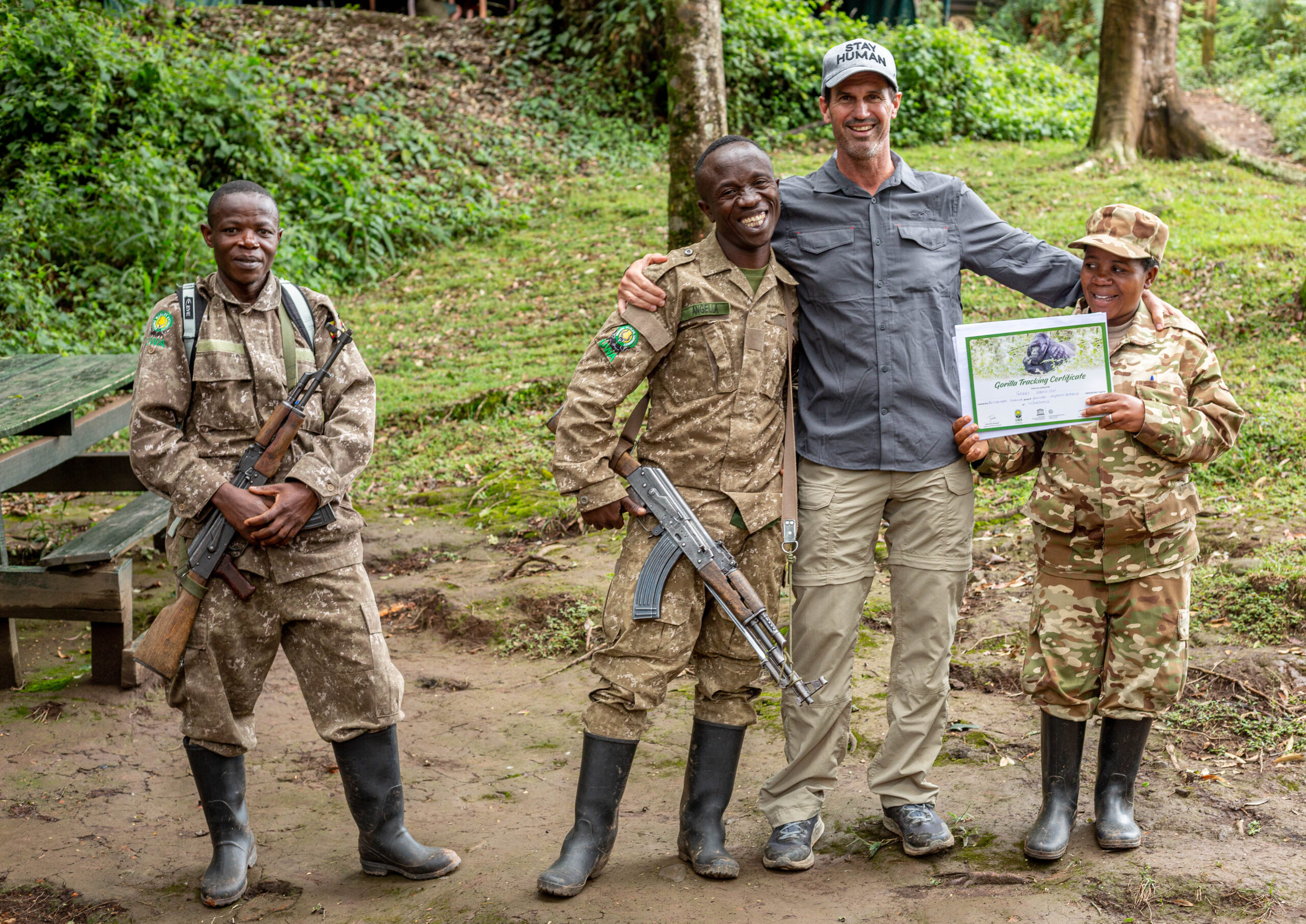
Rules and Regulations for Gorilla Trekking
Rules and Regulations for Gorilla Trekking. Gorilla trekking in Uganda and Rwanda stands as a gateway to the captivating world of these gentle giants. Also offering a unique opportunity to witness their magnificence in their natural habitat. Yet, this privilege comes with a responsibility – a responsibility to safeguard these creatures and their environment. Within this context, rules and regulations are meticulously craft to ensure that gorilla trekking remains a sustainable, respectful, and also harmonious endeavor for both humans and gorillas.

Preserving the Balance: The Essence of Rules and Regulations
1. Conservation Imperative
The foundation of gorilla trekking rules and regulations rests upon conservation imperatives. These guidelines exist to protect not only the gorillas but also the ecosystems that sustain them. By adhering to these rules, trekkers contribute to the preservation of these endangered species and their habitats.
2. Respect for Wildlife Behavior
Gorillas, like all animals, exhibit specific behaviors and social norms. Trekking rules are to ensure that human presence does not disrupt these natural behaviors. Observing from a respectful distance helps minimize stress and disturbance to the gorillas, fostering a harmonious coexistence.
3. Sustainable Tourism Management
Tourism plays a pivotal role in supporting conservation efforts, but it must be managed responsibly. Rules and regulations help regulate the number of visitors, the frequency of encounters, and the impact on the environment. This sustainable approach safeguards the longevity of both gorilla populations and the tourism industry.
Embarking on the Trek: Preparation and Conduct
1. Pre-Trek Briefing
Before setting out on the trek, trekkers are provided with essential information during a pre-trek briefing. This session covers safety precautions, ethical considerations, and behavioral guidelines that ensure a respectful and responsible encounter.
2. Group Size Limitations
To prevent overcrowding and minimize disturbance, gorilla trekking groups are intentionally kept small. This limitation fosters an intimate experience and reduces the impact of human presence on the gorillas’ habitat.

3. Time Limits and Human Proximity
Trekking permits specify the maximum time trekkers can spend with the gorillas. This restriction ensures that encounters remain brief and do not unduly stress the animals. Moreover, trekkers are required to maintain a minimum distance from the gorillas to prevent direct interaction and to avoid potential transmission of diseases.
4. Trekking Paths and Trail Etiquette
Trekking routes are carefully designated to minimize disruption to the gorillas’ habitats and behaviors. Trekkers are expected to stay on established paths and avoid trampling vegetation. This practice preserves the delicate balance of the ecosystem.
5. No Flash Photography
Flash photography is strictly prohibited during gorilla encounters. The sudden burst of light can startle and distress the gorillas. Instead, trekkers are encouraged to use natural light and capture the awe-inspiring moments responsibly.
Popular gorilla safaris include:
Environmental Care and Ethical Conduct
1. Litter and Waste Management
Gorilla trekking adheres to the principle of “Leave No Trace.” Trekkers are to carry out all waste, including non-biodegradable items, and dispose of it properly to prevent pollution and habitat degradation.
2. Avoiding Direct Eye Contact
Direct eye contact can be perceiving as a threat by gorillas and may lead to aggressive behavior. Trekkers are to avoid staring directly at the gorillas and to maintain a respectful demeanor.
3. No Feeding or Touching
Feeding gorillas human food can disrupt their natural diet and behavior. Touching gorillas can lead to the transmission of diseases. To preserve the gorillas’ well-being, trekkers are strictly not to feed or touch them.
4. Health Precautions
Gorillas are susceptible to human-borne diseases. Trekkers who are ill, particularly with contagious illnesses, are to postpone their trekking to prevent potential disease transmission.
Engaging with the Community and Guides
1. Respect for Local Communities
Gorilla trekking often involves interactions with local communities. Trekkers are to show respect for local customs, traditions, and cultural norms. Engaging in conversations and purchasing local crafts contribute positively to community well-being.
2. Following the Lead of Guides
Experienced guides and trackers accompany trekkers on their journey. Following their guidance is essential, as they possess intimate knowledge of the gorillas’ behaviors, the terrain, and safety protocols.

Conclusion: The Promise of Ethical Encounters
Gorilla trekking isn’t just an adventure; it’s a commitment to ethical encounters and responsible tourism. Rules and regulations are not restrictions but rather pledges to respect the delicate balance between human curiosity and wildlife preservation. As trekkers embark on this journey, they become stewards of the environment, protectors of gorilla populations, and advocates for the enduring beauty of our natural world.
